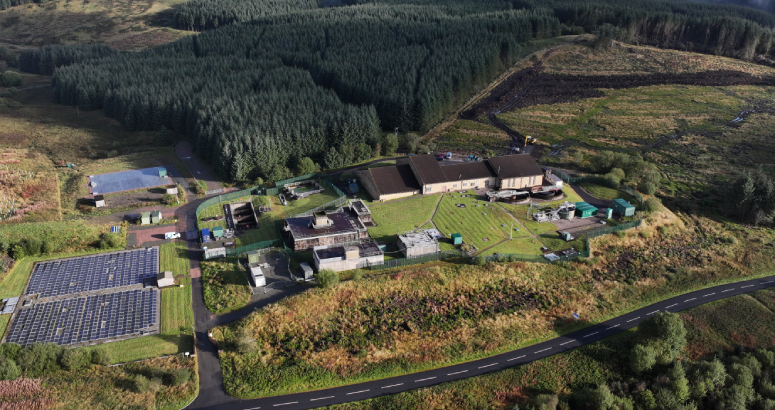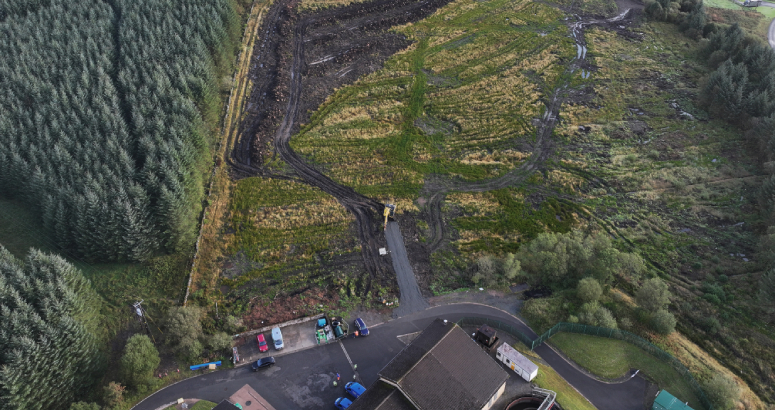Black Esk Water Treatment Works, Boreland
Project Overview
Scottish Water has received planning approval from Dumfries and Galloway Council for the construction of a new multi-million-pound Water Treatment Works (WTW) at Boreland.
The existing Black Esk WTW, built in 1987, currently provides 21.6 million litres of water daily to around 40,000 customers in Lockerbie, Annan, Dumfries, and surrounding areas.
It has now reached the end of its lifespan and is unsuitable for upgrading.
Following the approval of planning consent, the programme of works is currently being agreed. Further updates will be provided on this page once details are confirmed.
Scottish Water is working with its delivery partner, ESD, to deliver this essential project.
At A Glance
- £multimillion project
- 21.6 million litres of drinking water treated and supplied daily
- 40,000 customers served
- Supplies Lockerbie, Annan, Dumfries, and surrounding areas
- Delivered by ESD

Existing Black Esk WTW built in 1987
The existing WTW has reached the end of its serviceable lifespan
What We Are Doing
We are developing plans for a new WTW, including the necessary infrastructure, as well as upgrades and modifications to the existing plant. Upon completion of the new infrastructure, certain parts of the existing Black Esk WTW will become redundant and will be decommissioned.
The new works will be located on land adjacent to the existing works, within an area of commercial woodland. This site has been chosen in order to utilise the existing pipe work and reuse some of the existing buildings and infrastructure.
This project aims to enhance future network quality and resilience, ensuring a more stable treatment process and improved flow throughout the local water network.
As of September 2025, planning consent for the new WTW has been granted by Dumfries and Galloway Council. Any conditions set out as part of the consent will be incorporated into the project’s design and construction.
Community Engagement
We are committed to keeping local residents informed throughout the project. So far, engaging with the community has provided valuable insights and feedback that has helped shape our plans.
Based on this feedback, we have agreed to reduce the size and overall footprint of the building, and we are also reviewing the site entrance layout.
We hosted two public consultation events on 18th September and 30th October 2024.
Details from each of these meetings are provided in the document hub section of this page, along with an FAQs document that compiles questions we've received from residents so far.
We also attended North Milk Community Council meeting in November 2024 and Eskdalemuir Community Council meeting in January 2025.
Black Esk Document Hub
Details of both public consultation events that took place late-2024 can be found below, along with an FAQS document.
Click here
Area beside existing WTW where tree felling has taken place
Tree felling was part of the preparatory works
Environmental Impact
Environmental advisors have been engaged and will be consulted regularly throughout the duration of the project.
We carried out tree felling in commercial woodland in February 2024, which was already part of a long term commercial felling plan and enabled us to carry out ground condition surveys to help inform our designs.
Prior to carrying out this work, an ecological survey was completed within the purchased land area. The area was inspected for badgers, raptors, and any squirrel dreys and no evidence was found to indicate any activity within the working area. We also carried out an archaeological assessment and concluded archaeological risk is low.
As compensatory planting, nearly 3200 broadleaved trees will be planted at Ettrick, around 20 miles away. A further two hectares of native broadleaved woodland will be planted at Black Esk by the end of 2026 to replace the commercial woodland felled to facilitate the new works.
The native woodland trees being replanted are not for commercial use and won’t be cut down when they reach maturity, unlike commercial trees.
We are also exploring additional ways to enhance biodiversity on site. A biodiversity survey has already been conducted to identify potential improvements across the broader Black Esk area.






